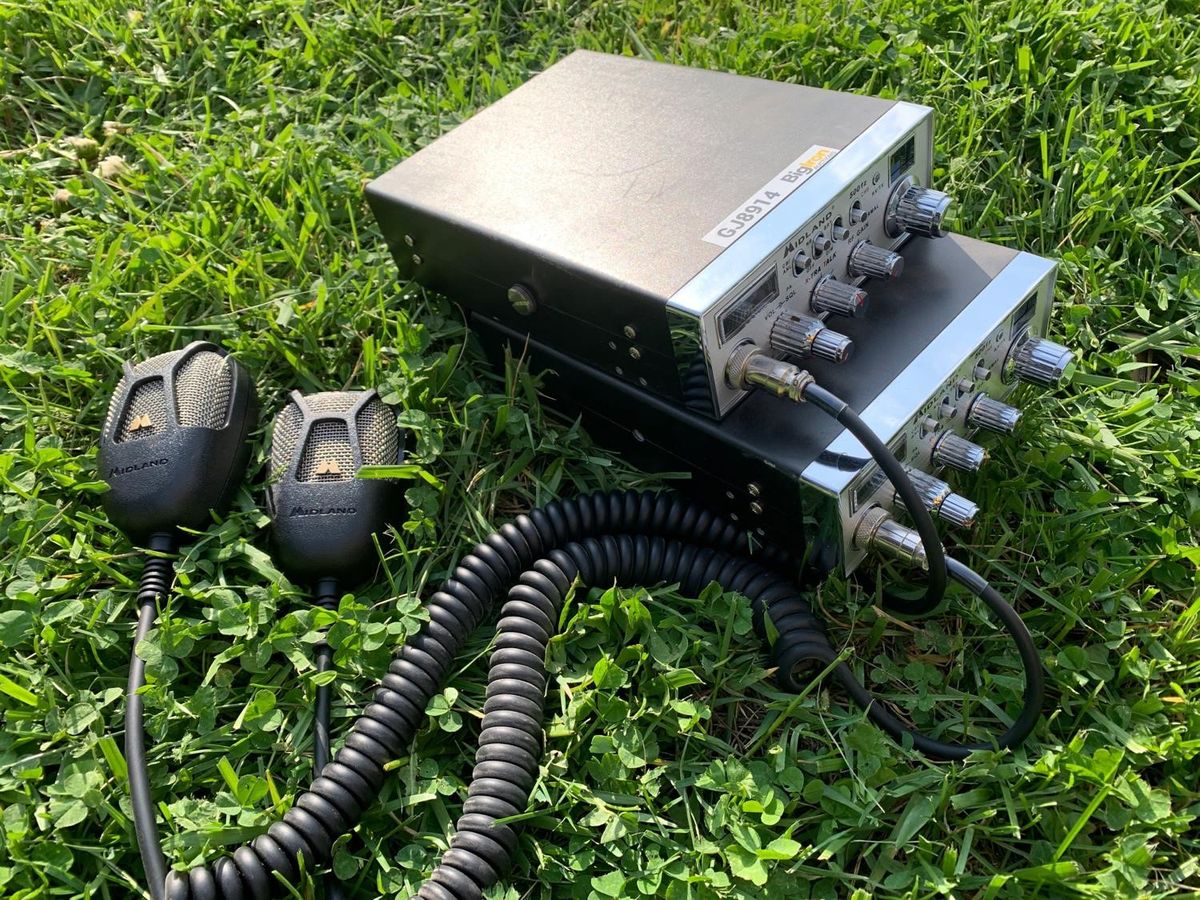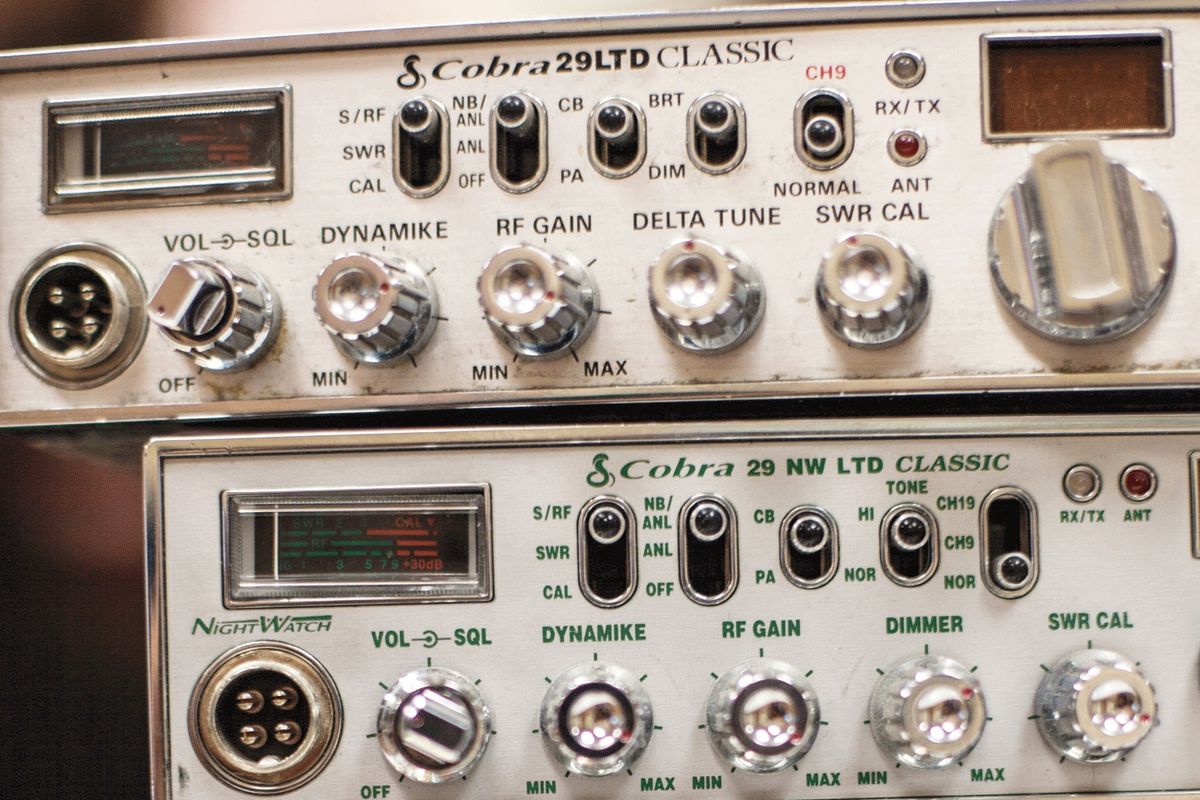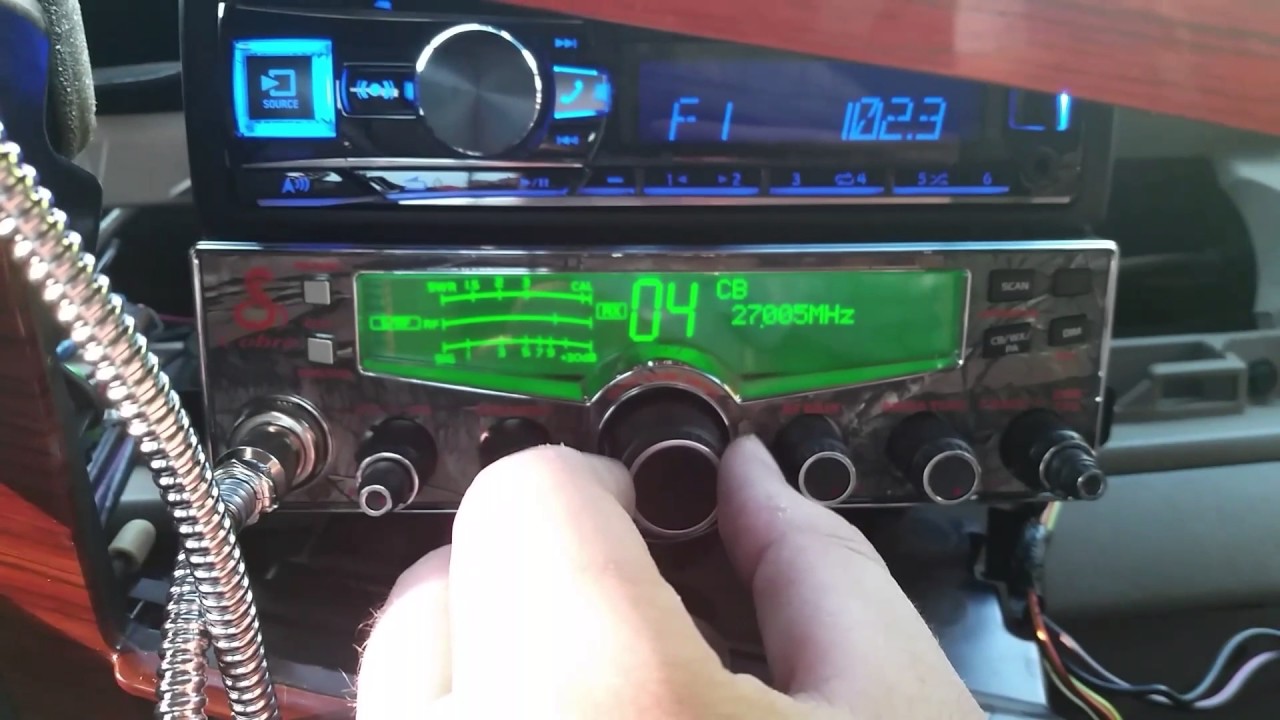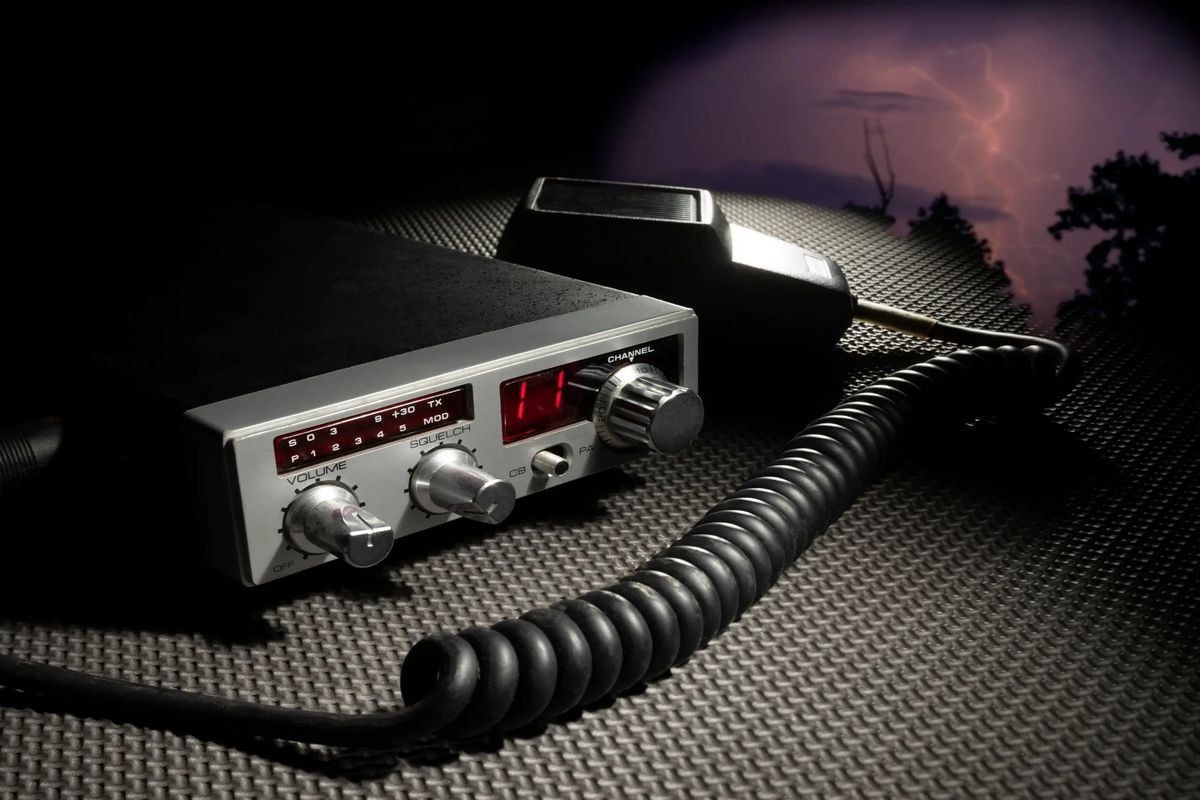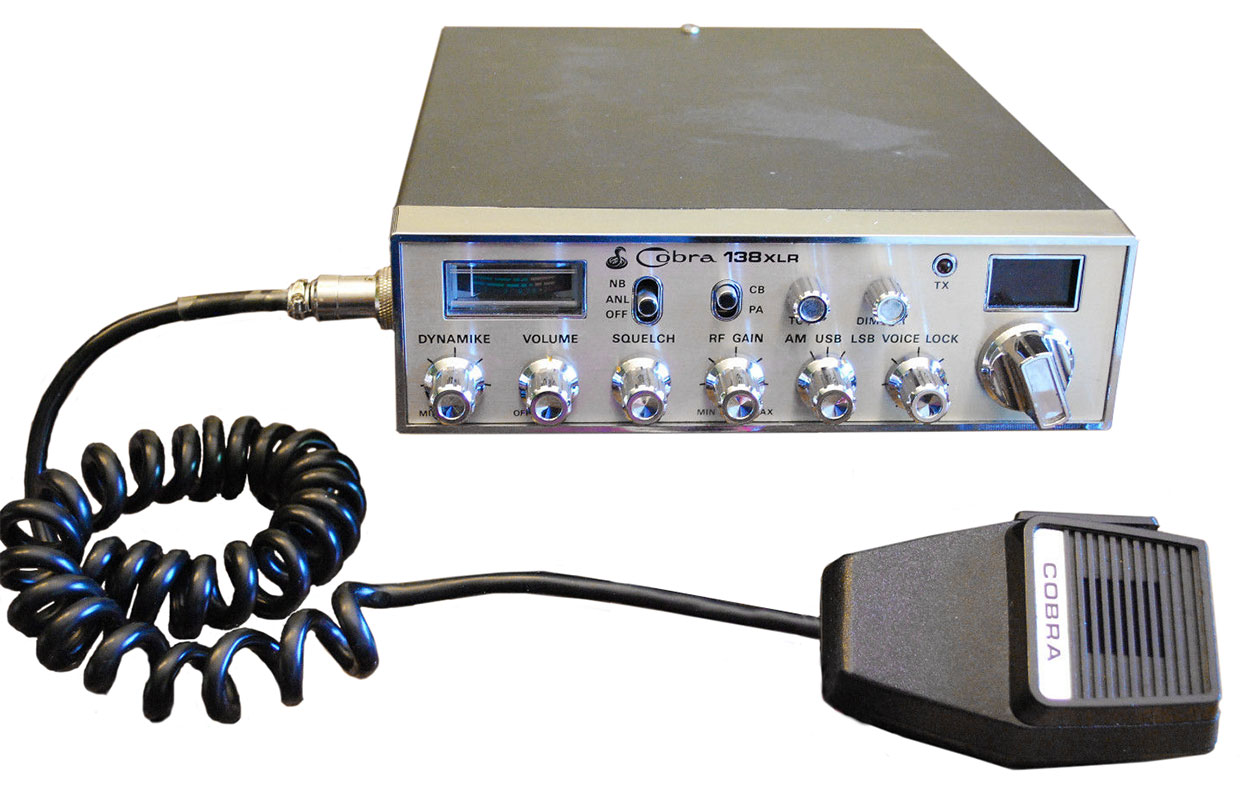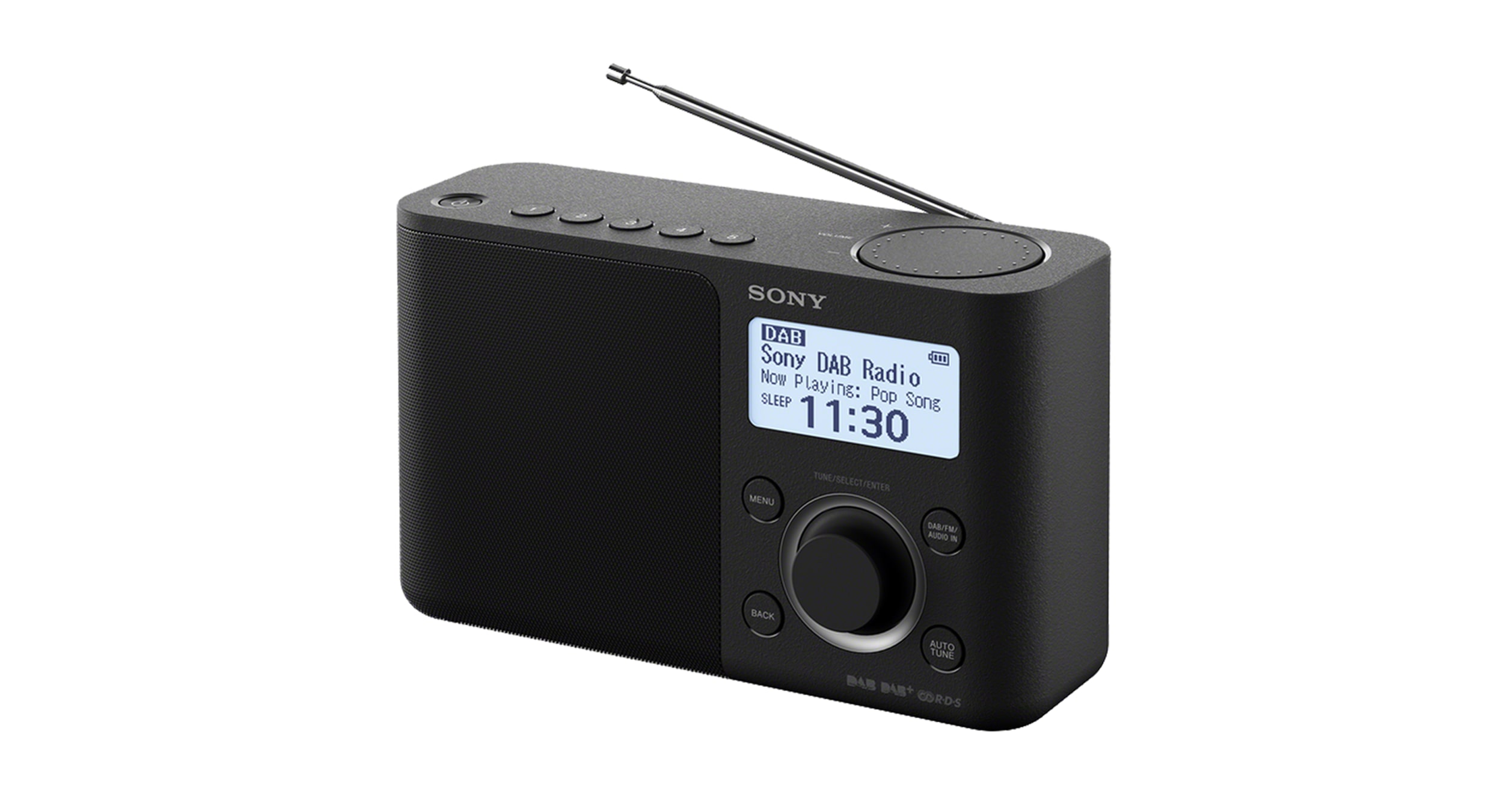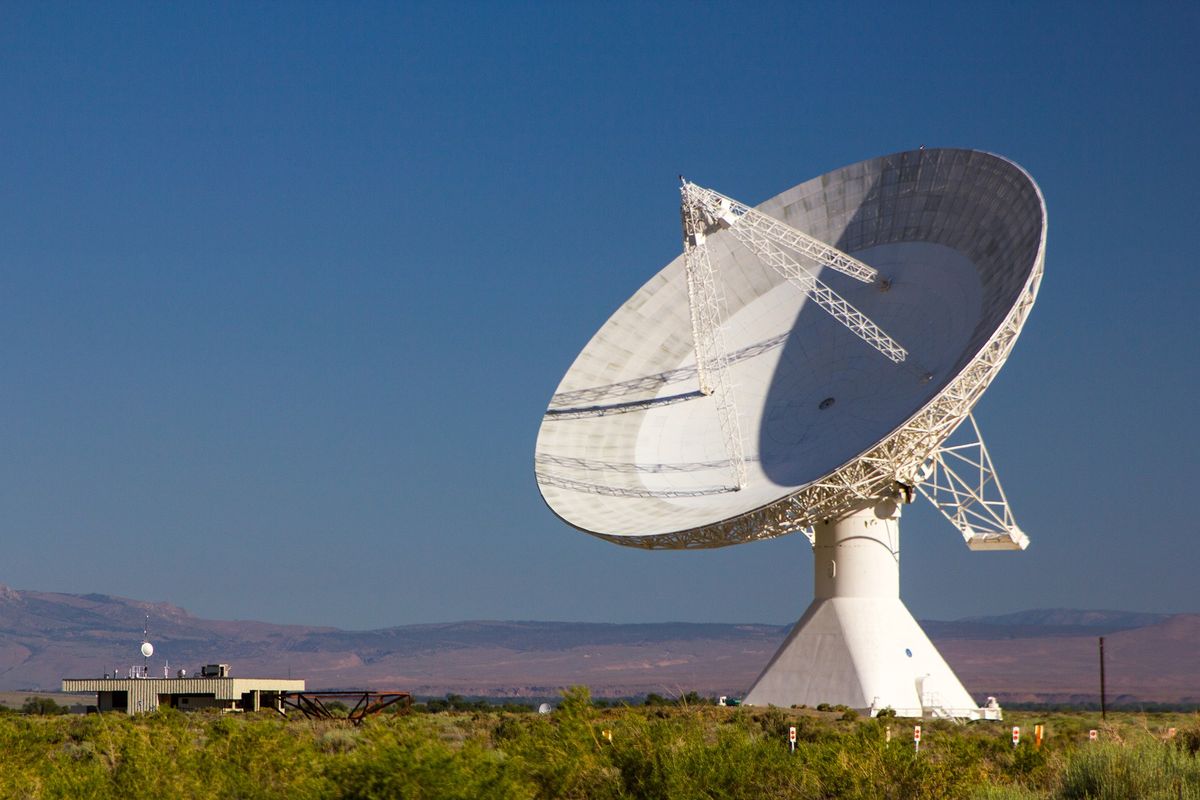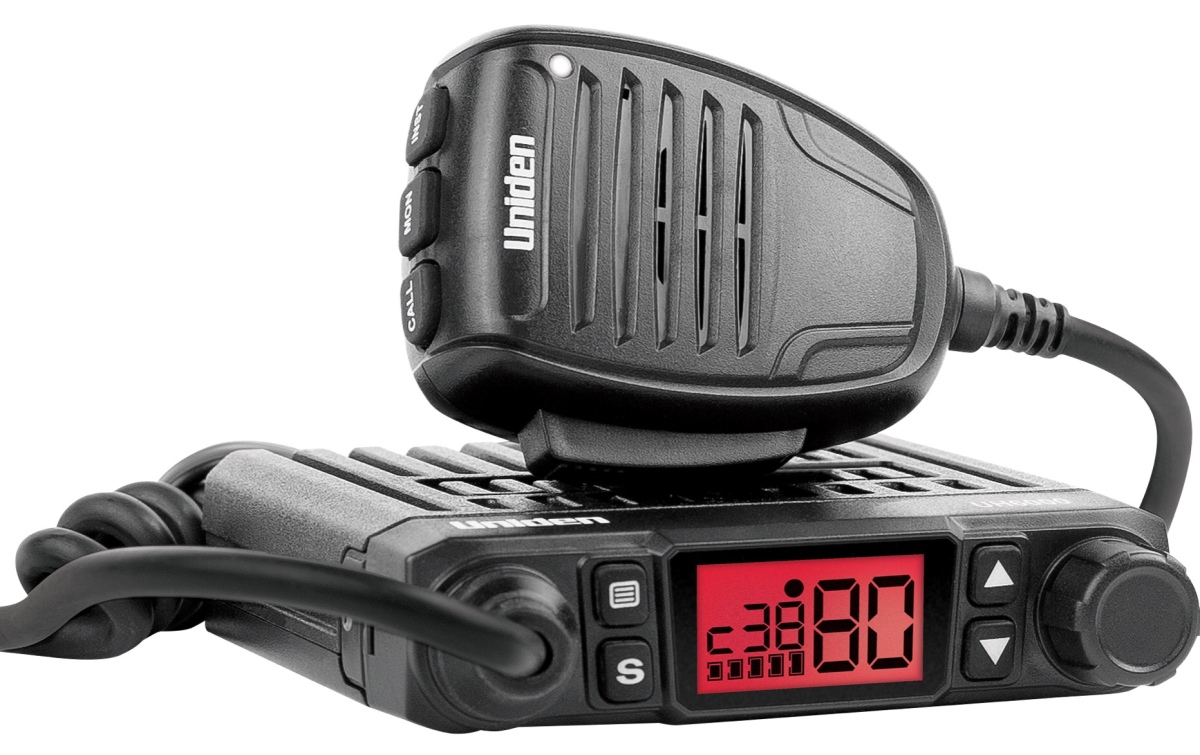Home>Devices & Equipment>Radio>What Is A CB Radio
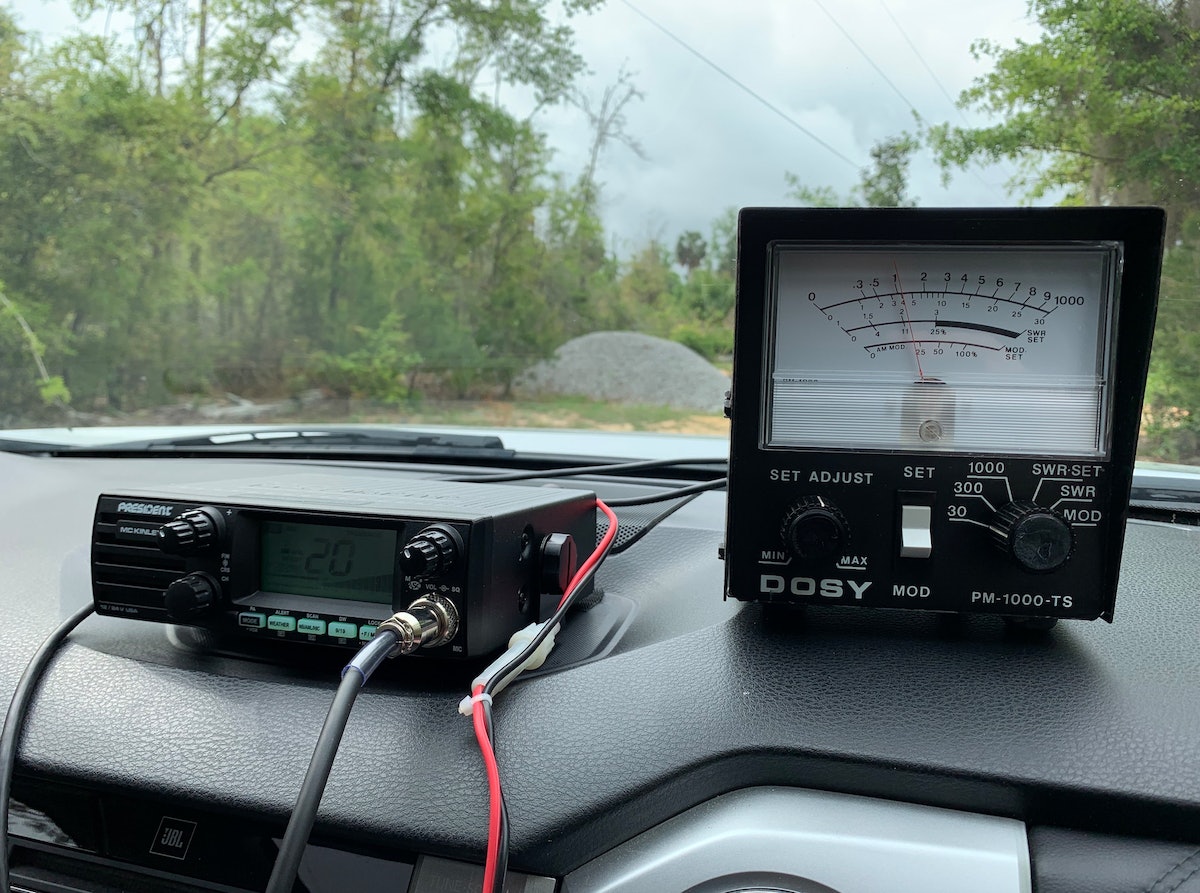

Radio
What Is A CB Radio
Published: November 17, 2023
Discover the ins and outs of CB radios and their importance in communication. Learn how this powerful radio technology can enhance your experience.
(Many of the links in this article redirect to a specific reviewed product. Your purchase of these products through affiliate links helps to generate commission for AudioLover.com, at no extra cost. Learn more)
Table of Contents
Introduction
CB radios have been a staple of communication for decades, providing a reliable means of transmitting messages over short distances. Whether used for professional purposes or as a hobby, CB radios offer a convenient way to stay connected while on the road. In this article, we’ll explore the history of CB radios, how they work, their benefits, common uses, key features, popular brands, regulations and licensing, and how to choose the right CB radio for your needs.
First introduced in the 1940s, CB radios, or Citizens Band radios, became popular among truckers, emergency personnel, and radio enthusiasts. They offered a simple and affordable way to communicate over short distances, making them invaluable tools in various industries.
CB radios operate on specific frequencies within the 27 MHz band, allowing users to have private conversations without the need for a central broadcasting station. These devices are equipped with a microphone and speaker, enabling two-way communication between users. Unlike mobile phones, CB radios don’t require a cellular network or subscription, making them a reliable alternative in areas with limited coverage.
CB radios are known for their range, typically providing reliable communication within a range of 1 to 10 miles, depending on the terrain and atmospheric conditions. This makes them ideal for communicating with nearby vehicles, coordinating group activities, or getting assistance in case of emergencies.
In recent years, CB radios have experienced a resurgence in popularity, with truckers, off-road enthusiasts, and outdoor adventurers embracing their simplicity and reliability. Additionally, CB radios offer a sense of community, with dedicated channels for different interests and a platform for exchanging information, advice, and even casual conversation.
In the following sections, we’ll delve deeper into the history, functionality, benefits, and various applications of CB radios. Whether you’re new to CB radios or a seasoned user, this article aims to provide valuable insights to help you make the most of this versatile communication device.
History of CB Radios
The history of CB radios dates back to the early 1940s when the Federal Communications Commission (FCC) allocated a block of radio frequencies for citizen use. This allocation, known as the Citizens Band, was primarily intended for personal and business communication in the United States. CB radios gained popularity in the 1950s, especially among truck drivers and hobbyists.
Originally, CB radios were used by small businesses, farmers, and rural communities, who found them to be an affordable and reliable means of communication. However, it was the trucking industry that played a significant role in popularizing CB radios. Truck drivers began using CB radios to communicate with each other on the road, sharing information about traffic, weather conditions, and road hazards.
The 1970s marked the golden era of CB radios, where their popularity skyrocketed. This was largely due to the emergence of the CB radio craze in popular culture, with movies like “Smokey and the Bandit” and songs like “Convoy” by C.W. McCall depicting the CB radio as a symbol of freedom and adventure.
During this time, CB radios became an important tool for emergency use, especially during natural disasters and other critical situations. They provided a means of communication when other modes of communication were down or overloaded, allowing individuals to request help, organize relief efforts, or simply check on the well-being of their loved ones.
As technology advanced, CB radios evolved, with manufacturers introducing features like squelch controls, channel scanning, and external antennas to improve performance. However, with the rise of personal cell phones in the 1980s, the popularity of CB radios declined.
In recent years, CB radios have experienced a resurgence in popularity, thanks in part to the trucking industry and the off-road community. Truck drivers continue to rely on CB radios for traffic updates and communicating with fellow drivers. Off-road enthusiasts, such as Jeep and 4×4 owners, utilize CB radios for trail communication and safety purposes. Additionally, CB radios have become popular among outdoor adventurers, campers, and RV owners, providing a reliable means of communication in remote areas.
Today, CB radios are not only used for practical purposes but also as a hobby. Many people enjoy the nostalgia and sense of community associated with using CB radios. There are even CB radio clubs and online forums where enthusiasts gather to discuss their experiences, share tips, and swap stories.
From humble beginnings to a modern-day communication tool, CB radios have come a long way. They continue to serve as a reliable means of communication for various industries and individuals, providing a convenient way to stay connected while on the go.
How CB Radios Work
CB radios operate on the Citizens Band, a specific range of frequencies within the 27 MHz band. They use AM (Amplitude Modulation) to transmit and receive signals, allowing for two-way communication between users. Understanding the basic workings of CB radios can help users make the most of their devices.
When you speak into the microphone attached to a CB radio, your voice is converted into an electrical signal. This signal is then modulated onto a carrier wave, which increases its frequency and amplitude. The modulated signal is then transmitted through the antenna, allowing it to be received by other CB radios within range.
On the receiving end, the CB radio antenna picks up the incoming signal and sends it through the radio’s receiver circuit. The receiver circuit demodulates the signal, separating the original audio signal from the carrier wave. This audio signal is then amplified and played through the radio’s built-in speaker or external speaker.
CB radios typically have multiple channels, each representing a specific frequency. The most common CB radios have 40 channels, with designated channel numbers from 1 to 40. These channels are shared among users, and maintaining proper etiquette is essential for efficient communication.
One important aspect of CB radio usage is the concept of “keying the mic.” This means pressing the Push-to-Talk (PTT) button on the microphone while speaking to transmit your message. Once you release the PTT button, you can listen to incoming transmissions from other users on the selected channel.
CB radios have limited range, usually within a few miles, depending on various factors such as antenna quality, terrain, and atmospheric conditions. However, a variety of factors can affect the range and clarity of CB radio communications, including the presence of obstructions like buildings, hills, and other vehicles.
It’s important to note that CB radios do not require a license to use in most countries, but there may be regulations regarding power output and allowable channels. Familiarizing yourself with local laws and regulations is essential to ensure compliant and responsible use of CB radios.
In recent years, advancements in technology have led to the development of feature-rich CB radios. These features may include built-in weather channels, channel scanning, adjustable squelch controls to reduce background noise, and even Bluetooth connectivity for hands-free operation.
Understanding how CB radios work can help users optimize their experience, ensure effective communication, and make the most out of the features offered by their chosen device. Whether for professional or recreational use, CB radios provide a reliable and convenient means of communication over short distances.
Benefits of CB Radios
CB radios offer a range of benefits that make them an invaluable communication tool in various situations. Whether you’re a truck driver, outdoor adventurer, or part of a community that relies on efficient communication, CB radios have several advantages that set them apart from other forms of communication.
One of the main benefits of CB radios is their simplicity and ease of use. Unlike mobile phones or other complex communication devices, operating a CB radio is straightforward. Most CB radios have a minimalistic design, with intuitive controls and a clear display. They require no cellular network or subscription, making them accessible and affordable for users of all backgrounds.
CB radios are known for their reliability, especially in areas with limited cellular coverage. They provide a direct point-to-point communication channel, allowing users to transmit messages to others within the range of their radio. This can be particularly useful in remote areas or during emergencies when traditional communication methods may be unavailable.
Another advantage of CB radios is their range. While the range can vary depending on terrain and atmospheric conditions, CB radios generally offer a communication range of 1 to 10 miles. This range is usually sufficient for communicating with nearby vehicles, coordinating group activities, or seeking assistance in case of emergencies.
One of the unique aspects of CB radios is the sense of community they foster. CB radio enthusiasts often gather on specific channels dedicated to hobbies, interests, or local communities. This allows users to connect with like-minded individuals, share information, and even engage in casual conversation. CB radios can create a sense of camaraderie and provide a platform for networking and exchanging valuable information.
CB radios are also valuable tools in industries that rely on efficient communication, such as trucking and emergency services. Truck drivers use CB radios to stay informed about road conditions, receive updates on traffic congestion, and communicate with fellow drivers about potential hazards or upcoming rest stops. Emergency personnel can utilize CB radios during critical situations when other communication systems may be overloaded or compromised.
Furthermore, CB radios can be utilized for recreational purposes. Outdoor enthusiasts, campers, and off-road adventurers often rely on CB radios for trail communication, coordinating group activities, and ensuring safety. CB radios allow users to stay connected with their companions and receive important updates about weather conditions or potential dangers in the area.
In summary, the benefits of CB radios include their simplicity and ease of use, reliability in areas with limited cellular coverage, a sufficient communication range, fostering a sense of community, and their utility in various industries and recreational activities. Whether for professional or leisure purposes, CB radios provide a reliable and efficient means of communication, connecting people and enabling effective and convenient conversations.
Common Uses of CB Radios
CB radios are widely used in various industries and recreational activities due to their reliable and accessible communication capabilities. Let’s explore some of the common uses of CB radios.
- Trucking: CB radios have long been a staple in the trucking industry. Truck drivers use CB radios to communicate with fellow drivers, sharing essential information about road conditions, traffic congestion, and potential hazards. This helps them stay informed, plan their routes efficiently, and ensure their safety on the road.
- Emergency Services: CB radios play a crucial role in emergency situations. During natural disasters or other critical incidents, communication networks can become overloaded or fail. CB radios provide a reliable means of communication for emergency personnel to coordinate efforts, request assistance, and provide updates on the situation.
- Off-Roading and Outdoor Adventures: Whether it’s off-roading in a 4×4 vehicle, hiking in remote areas, or camping in the wilderness, CB radios are often used for communication and safety purposes. They allow enthusiasts to stay connected with their group members, warn about potential dangers, and seek help if needed. Trails often have dedicated CB radio channels for users to communicate and share information.
- Construction and Warehousing: In the construction and warehousing industries, CB radios are essential for efficient communication. They enable workers to coordinate tasks, report emergencies, and address issues promptly. CB radios are particularly valuable in large construction sites and warehouses where mobile phone coverage may be limited or unreliable.
- Recreational Vehicles and Caravans: Owners of recreational vehicles such as motorhomes and caravans often utilize CB radios for communication while on the road. Group travelers can stay connected and coordinate their movements, making sure everyone stays together and arrives at their destinations safely.
- Citizens Band Clubs and Organizations: CB radio enthusiasts often form clubs and organizations, creating a community of users with shared interests. These groups establish dedicated channels for their members to communicate, exchange information, and participate in events or competitions. This allows users to network, broaden their knowledge, and socialize with like-minded individuals.
These are just a few examples of the common uses of CB radios. The versatility and simplicity of CB radios make them suitable for a wide range of applications, promoting efficient communication, enhancing safety, and fostering a sense of community among users. Whether in professional settings or for recreational purposes, CB radios continue to be a reliable and accessible means of communication for numerous industries and activities.
Key Features of CB Radios
CB radios come with a variety of features that enhance their functionality and improve the user experience. Here are some key features to look out for when choosing a CB radio:
- Multiple Channels: Most CB radios offer multiple channels, typically ranging from 40 to 120. These channels allow users to find and communicate with others on the same frequency, as well as avoid congestion on popular channels.
- Squelch Control: Squelch control is a feature that helps eliminate background noise when there are no active transmissions. It allows users to adjust the sensitivity of the receiver, ensuring clear and distortion-free audio.
- RF Gain Control: The RF (Radio Frequency) gain control feature allows users to adjust the radio’s sensitivity to receive weaker signals or filter out stronger ones. This can help improve overall reception and ensure clear communication, especially in areas with fluctuating signal strength.
- Channel Scan: Channel scanning allows users to automatically cycle through selected channels, listening for active transmissions. This feature is useful for monitoring multiple channels without the need to manually switch between them.
- Weather Channels: Some CB radios come with built-in weather channels that provide real-time updates and alerts from official weather stations. This feature is particularly valuable for outdoor enthusiasts and those traveling in areas prone to severe weather conditions.
- PA (Public Address) System: Certain CB radios have a PA system feature, allowing users to connect an external speaker and use the radio as a public address system. This can be useful for making announcements or broadcasting messages to a group of people.
- Backlit Display and Controls: A backlit display and controls make it easier to use the CB radio in low-light conditions. Whether it’s early morning or nighttime, the backlighting ensures visibility and ease of operation.
- External Antenna Capability: CB radios with external antenna capability allow users to connect a more powerful or specialized antenna for enhanced range and performance. This feature can be beneficial, especially for those operating in areas with weak signal coverage.
- Bluetooth Connectivity: Some advanced CB radios offer Bluetooth connectivity, enabling users to connect their radio to compatible devices such as headsets or smartphones for hands-free communication.
Choosing a CB radio with the desired features depends on your specific needs and intended use. Consider the range, portability, additional features, and any local regulatory requirements when selecting a CB radio to ensure it meets your communication and functionality requirements.
Remember, not all CB radios have the same features, so it’s important to research and compare different models to find the one that best aligns with your needs and preferences.
Popular CB Radio Brands
When it comes to CB radios, several brands have established themselves as leaders in the industry. These brands are known for their quality, reliability, and innovative features. Here are some popular CB radio brands:
- Uniden: Uniden is a well-known brand that offers a wide range of CB radios to suit various needs. They are known for their durability, advanced features, and user-friendly interfaces. Uniden CB radios often come with weather channels, channel scanning capabilities, and long communication ranges.
- Cobra: Cobra is another highly regarded brand in the CB radio market. They are known for their cutting-edge technology and innovative features. Cobra CB radios often come with advanced noise-canceling capabilities, built-in Bluetooth for wireless connectivity, and customizable settings to enhance user experience.
- Midland: Midland is a reputable brand with a long history of producing reliable CB radios. They offer a range of models suitable for both professional and recreational use. Midland CB radios are known for their durability, clear audio quality, and user-friendly controls.
- Galaxy: Galaxy is a brand that caters primarily to serious CB radio enthusiasts. They are known for manufacturing high-quality radios with advanced features and exceptional performance. Galaxy CB radios often offer adjustable power levels, large displays, and multiple channel options.
- President: President is a leading brand in the CB radio market, particularly in Europe. They are known for their stylish designs, excellent build quality, and advanced features. President CB radios often come with multiple channel options, weather channels, and intuitive user interfaces.
These are just a few examples of popular CB radio brands, but there are many other reputable manufacturers in the market. When choosing a CB radio, it’s essential to consider factors such as desired features, budget, and specific requirements for your intended use. Reading reviews and comparing different models can help you make an informed decision and find a CB radio brand that best fits your needs.
Remember, regardless of the brand you choose, it’s important to ensure that the CB radio complies with local CB radio regulations and licensing requirements to stay within legal boundaries.
CB Radio Regulations and Licensing
CB radios are subject to regulations and licensing requirements to ensure responsible and lawful use of these communication devices. While regulations can vary depending on the country, here are some general guidelines to consider:
- Licensing: In many countries, including the United States, CB radios do not require a license to operate. They are allocated for public use on designated channels, commonly known as the Citizens Band. This allows for easy access and encourages widespread use without barriers.
- Power Output: CB radios are typically limited to a maximum power output of 4 watts for AM modulation and 12 watts for Single Sideband (SSB) modulation. Exceeding these power limits can result in interference with other radio services and is generally not permitted.
- Frequency Channels: The specific frequency channels for CB radios may vary from country to country. It’s important to check the regulations in your location to determine the authorized channel frequencies for legal operation.
- Etiquette and Language: CB radio users are expected to abide by proper etiquette and language guidelines. This includes using respectful and appropriate language, avoiding unnecessary transmissions, and adhering to any local rules or guidelines regarding language usage.
- Prohibited Use: There are certain activities that are typically prohibited on CB radios, such as broadcasting music, advertising, or using them for commercial purposes without the appropriate licensing. It’s important to familiarize yourself with the regulations that apply to your country or region to ensure compliant usage.
It’s worth noting that while CB radios generally do not require licensing, there may be additional regulations for using certain features or accessories. For example, using amplifiers to increase transmission power is typically illegal and can lead to penalties or interferes with other radio services.
It’s recommended to consult the specific regulations of your country’s telecommunications authority or regulatory body to ensure compliance with the laws governing CB radio operation. They will provide comprehensive guidelines and information on licensing, power limits, channel allocations, and any other relevant regulations that apply to your jurisdiction.
By following the regulations and demonstrating responsible usage, you can enjoy the benefits of CB radios while ensuring that the frequencies are available to all users in a fair and equitable manner.
Choosing the Right CB Radio
When it comes to choosing a CB radio, there are several factors to consider to ensure you select the right device for your needs. Here are some key points to keep in mind when making your decision:
- Intended Use: Consider how you plan to use the CB radio. Are you a professional truck driver needing reliable communication on the road, or are you an outdoor enthusiast looking for a radio to stay connected during off-road adventures? Different use cases may have specific requirements when it comes to range, durability, and additional features.
- Range: Assess the range you will typically need for your intended use. If you mainly require short-range communication within a limited area, a standard CB radio with a communication range of 1 to 10 miles may be sufficient. However, if you need longer-range capabilities, consider models with amplifiers or additional antennas.
- Features: Determine which features are essential for you. For example, if you often travel in areas prone to severe weather conditions, a CB radio with built-in weather channels can be valuable. If convenience is important, look for features like channel scanning, adjustable squelch controls, or Bluetooth connectivity for hands-free operation.
- Quality and Durability: Look for a CB radio that is well-constructed and built to withstand the conditions of your intended use. Consider factors such as the quality of the materials, water resistance or weatherproofing, and user reviews indicating the reliability and durability of the model.
- Price and Budget: Establishing your budget is an important step in the decision-making process. CB radio prices can vary significantly, with basic models being more affordable and feature-rich models or high-end brands commanding a higher price. Determine your budget range and prioritize features based on your needs.
- User Reviews and Recommendations: Read user reviews and seek recommendations from trusted sources, such as fellow CB radio users or reputable websites. Feedback from those who have already used the CB radio model you are considering can provide valuable insights into its performance, reliability, and overall user experience.
Ultimately, choosing the right CB radio involves finding a balance between the features you need, your budget, and the reliability of the specific model. Researching different brands and models, considering user reviews, and seeking recommendations can help you make an informed decision that will meet your communication requirements and provide a positive user experience.
Remember to also familiarize yourself with any regulations or licensing requirements that may apply to the use of CB radios in your country or region to ensure compliance with the law.
Conclusion
CB radios have been a reliable communication tool for decades, offering a simple and accessible means of staying connected over short distances. Whether you’re a truck driver communicating with fellow drivers on the road, an outdoor enthusiast exploring remote areas, or part of an industry requiring efficient communication, CB radios provide a range of benefits.
Throughout this article, we’ve explored the history of CB radios, their functionality, common uses, key features, popular brands, regulations, and factors to consider when choosing the right CB radio for your needs.
CB radios have evolved over the years, incorporating advanced features like weather channels, Bluetooth connectivity, and scanning capabilities. However, they retain their simplicity and ease of use, making them suitable for users of all backgrounds and experience levels.
From trucking to emergency services, outdoor adventures to community engagement, CB radios continue to play a vital role in various industries and recreational activities. They offer reliable communication, enhance safety, and foster a sense of community among users.
When choosing a CB radio, consider the intended use, desired range, key features, quality, budget, and user reviews. Researching different brands and models and seeking recommendations can help you find the perfect CB radio that meets your communication requirements.
Remember to familiarize yourself with the regulations and licensing requirements in your country or region to ensure legal and responsible use of CB radios.
Overall, CB radios remain a valuable and dependable communication tool in today’s fast-paced world. Whether on the road, in the great outdoors, or in various professional settings, CB radios are here to stay, keeping us connected and helping us communicate effectively. So, pick up your microphone, turn on your CB radio, and join the community of users who rely on these devices for clear and efficient communication.

